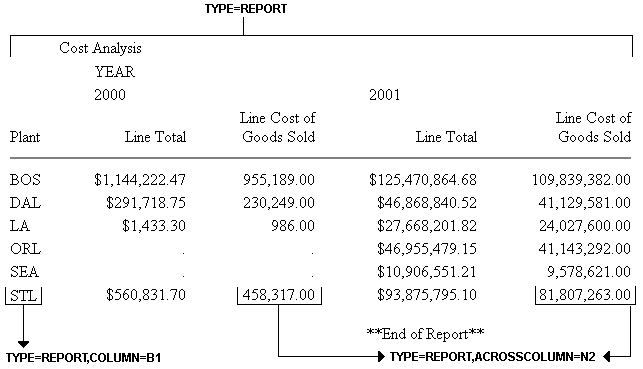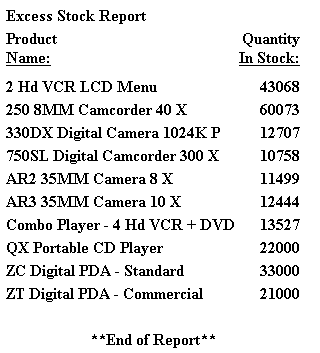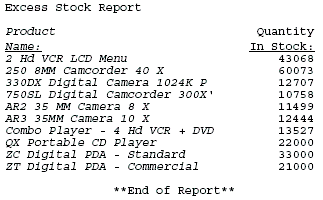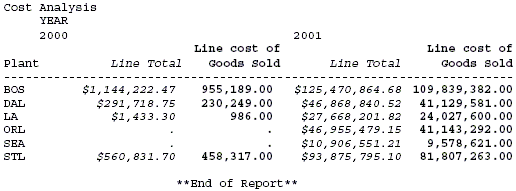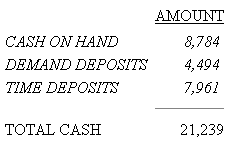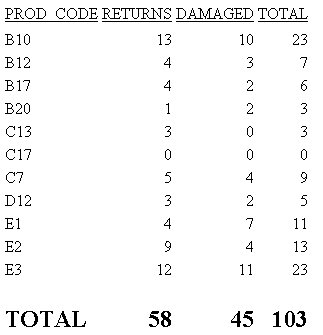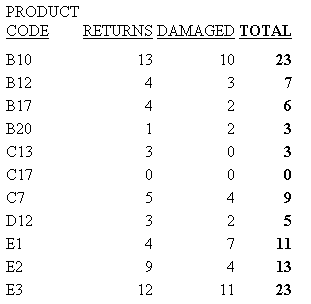TYPE=REPORT, coltype=column
where:
- coltype
-
Specifies the type of column. It can be:
- COLUMN, which
specifies a sort column (generated by BY), a display column (generated
by PRINT, LIST, SUM, or COUNT), a computed column (generated by
COMPUTE), or a column of row totals (generated by ROW-TOTAL).
- ACROSSCOLUMN, which
specifies every instance of a column that is repeated across a horizontal
sort (ACROSS) row. This also applies the formatting to the horizontal
sort (ACROSS) values that appear above the column titles.
- column
-
Specifies one or more columns. If you are identifying an
ACROSSCOLUMN, the only valid identifiers are Nn and Pn,
and these only count ACROSS fields, not display fields.
Options for identifying columns in a
StyleSheet are:
|
Identifier
|
Description
|
Nn |
Identifies a column by its position in the
report. To determine this value, count vertical sort (BY) fields,
display fields, and ROW-TOTAL fields, from left to right, including
NOPRINT fields. For ACROSSCOLUMN, only ACROSS fields are
counted.
|
Pn |
Identifies a column by its position in the
report. To determine the value of n, count vertical sort
(BY) fields, display fields, and ROW-TOTAL fields from left to right.
Do not count NOPRINT fields. For ACROSSCOLUMN, only ACROSS fields
are counted.
|
Cn |
Identifies a display column by its position
in the report. To determine the value of n, count only display
fields from left to right, including NOPRINT fields. Do not count
vertical sort (BY) fields or ROW-TOTAL fields.
To select all
display fields use C*.
|
Bn |
Identifies a vertical sort (BY) column by
its position in the report. To determine the value of n,
count only vertical sort (BY) fields, including NOPRINTs, from left
to right.
To select all BY fields use B*.
|
field |
Identifies a column by its field name.
When
a field occurs more than once, use field(n) to select a particular
occurrence or field(*) to select all occurrences of the field.
|
ROWTOTAL |
Identifies a column of row totals generated
using ROW-TOTAL. When used with ACROSS and multiple display commands,
ROWTOTAL generates multiple total columns. Use ROWTOTAL(n)
to select a particular total column. Use ROWTOTAL(field)
to select the row total column for a particular field.
Use
ROWTOTAL(*) to select all row total columns in the report.
|
Note: Within a StyleSheet, all columns
must be specified in the same way, either by field name or positional
reference.
Example: Identifying an Entire Column
The
following illustrates how to identify an entire column, which consists
of the column data and the column title, in a report. The relevant
StyleSheet declaration is highlighted in the request.
Note: To
produce the same results you can, alternatively, use the values
P1, B1, or the fieldname (PRODNAME) for the COLUMN attribute in
the StyleSheet declaration.
TABLE FILE CENTINV
HEADING
"Excess Stock Report"
SUM QTY_IN_STOCK
BY PRODNAME
WHERE QTY_IN_STOCK GT 10000
FOOTING CENTER
"**End of Report**"
ON TABLE SET PAGE-NUM OFF
ON TABLE SET STYLE *
TYPE=REPORT, GRID=OFF,$
TYPE=REPORT, COLUMN=N1, STYLE=ITALIC,$
ENDSTYLE
END
The output is:
Example: Identifying an Entire Horizontal (ACROSS) Column
The following illustrates how to identify
a horizontal (ACROSS) column. When you identify and format an ACROSSCOLUMN,
all data values, the column title, and any horizontal sort (ACROSS)
values associated with the field are formatted for every instance
of the column in the report output. The relevant StyleSheet declarations
are highlighted in the request.
Note: To
produce the same results you can alternatively use the values P1 and
P2, respectively, for the ACROSSCOLUMN attribute.
TABLE FILE CENTORD
SUM LINEPRICE LINE_COGS AS 'Line Cost of,Goods Sold'
BY PLANT AS 'Plant'
ACROSS YEAR
WHERE YEAR EQ 2000 OR 2001
HEADING
"Cost Analysis"
FOOTING CENTER
"**End of Report**"
ON TABLE SET PAGE-NUM OFF
ON TABLE SET STYLE *
TYPE=REPORT, GRID=OFF,$
TYPE=REPORT, ACROSSCOLUMN=N1, STYLE=ITALIC,$
TYPE=REPORT, ACROSSCOLUMN=N2, STYLE=BOLD,$
ENDSTYLE
END
The output is:
